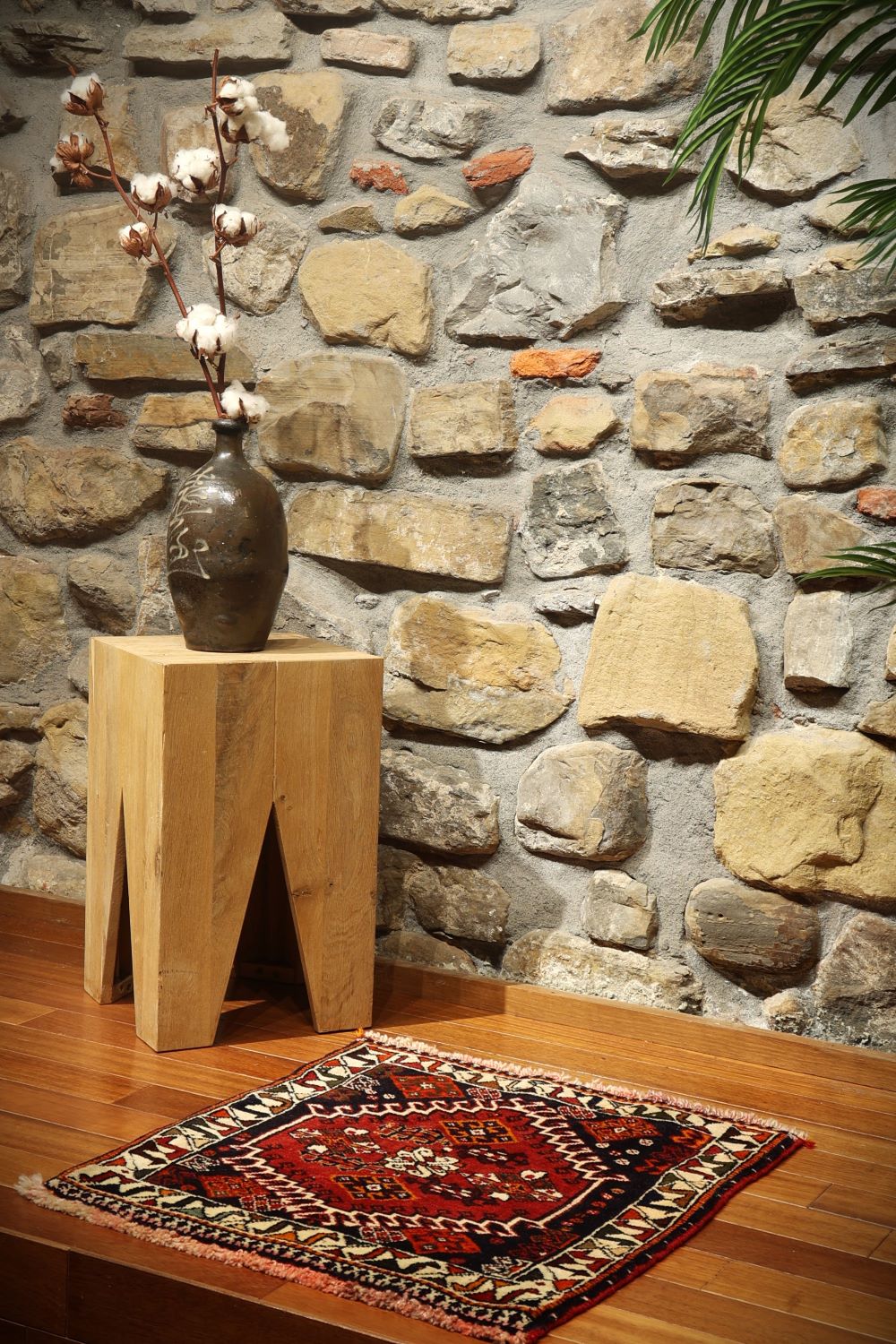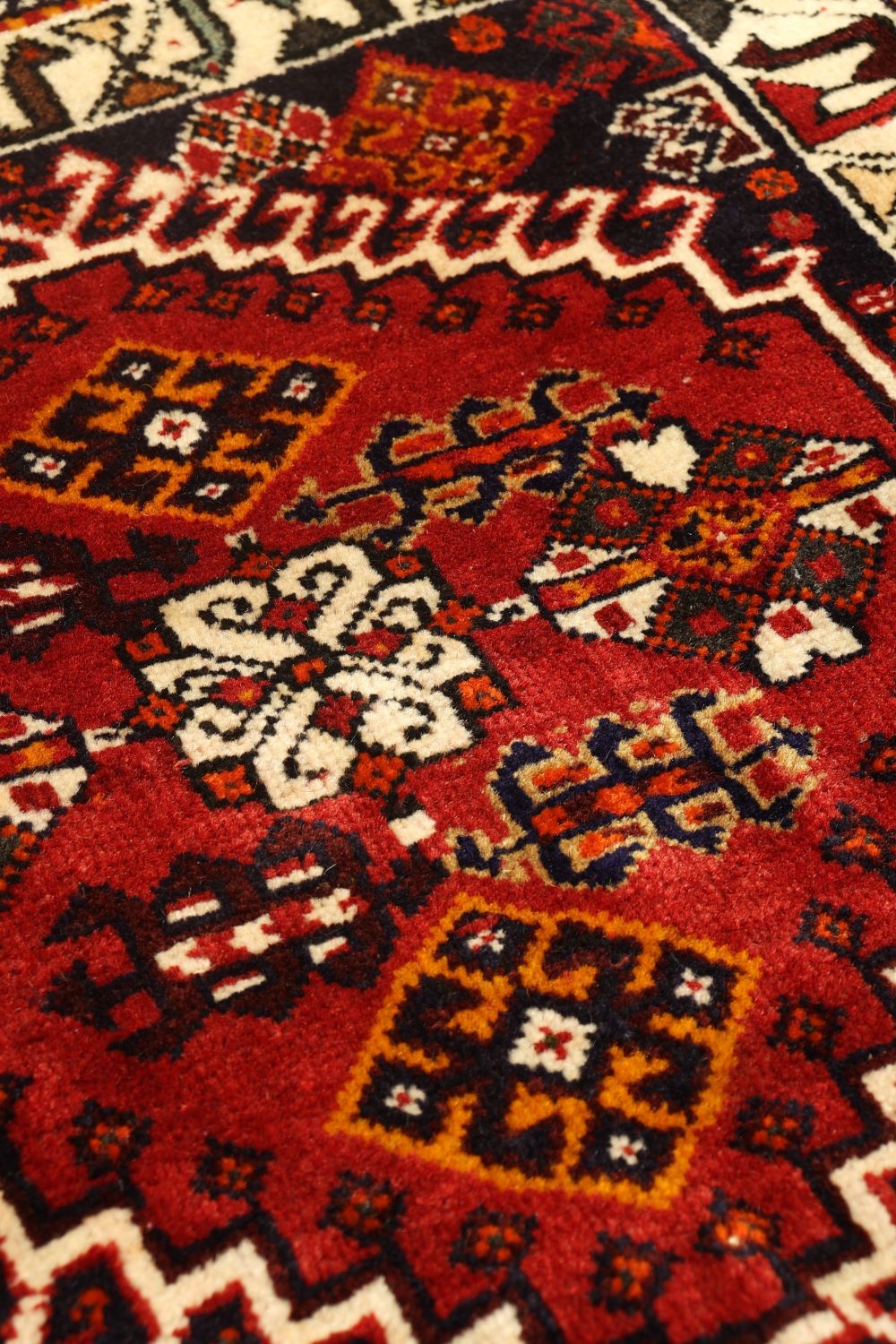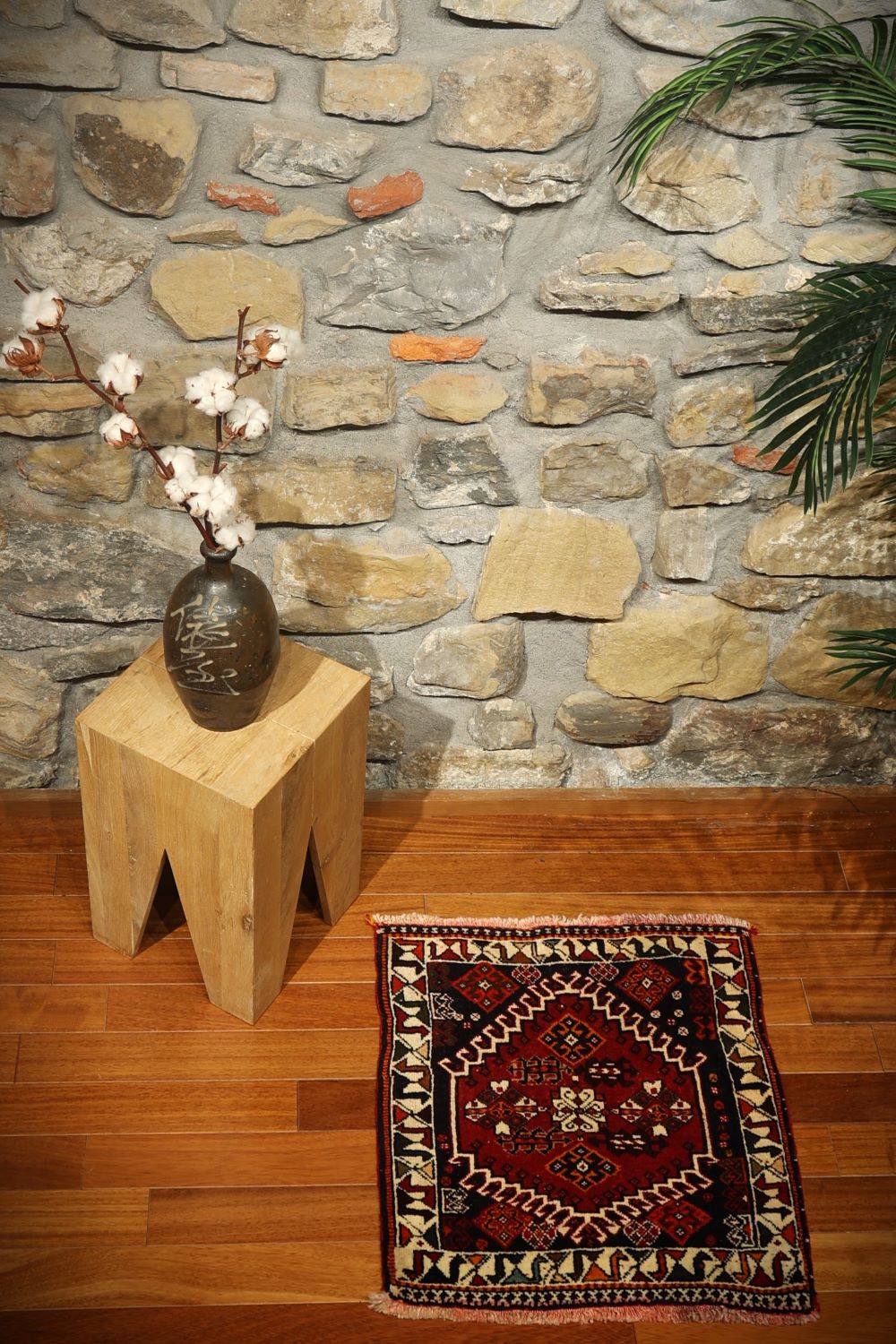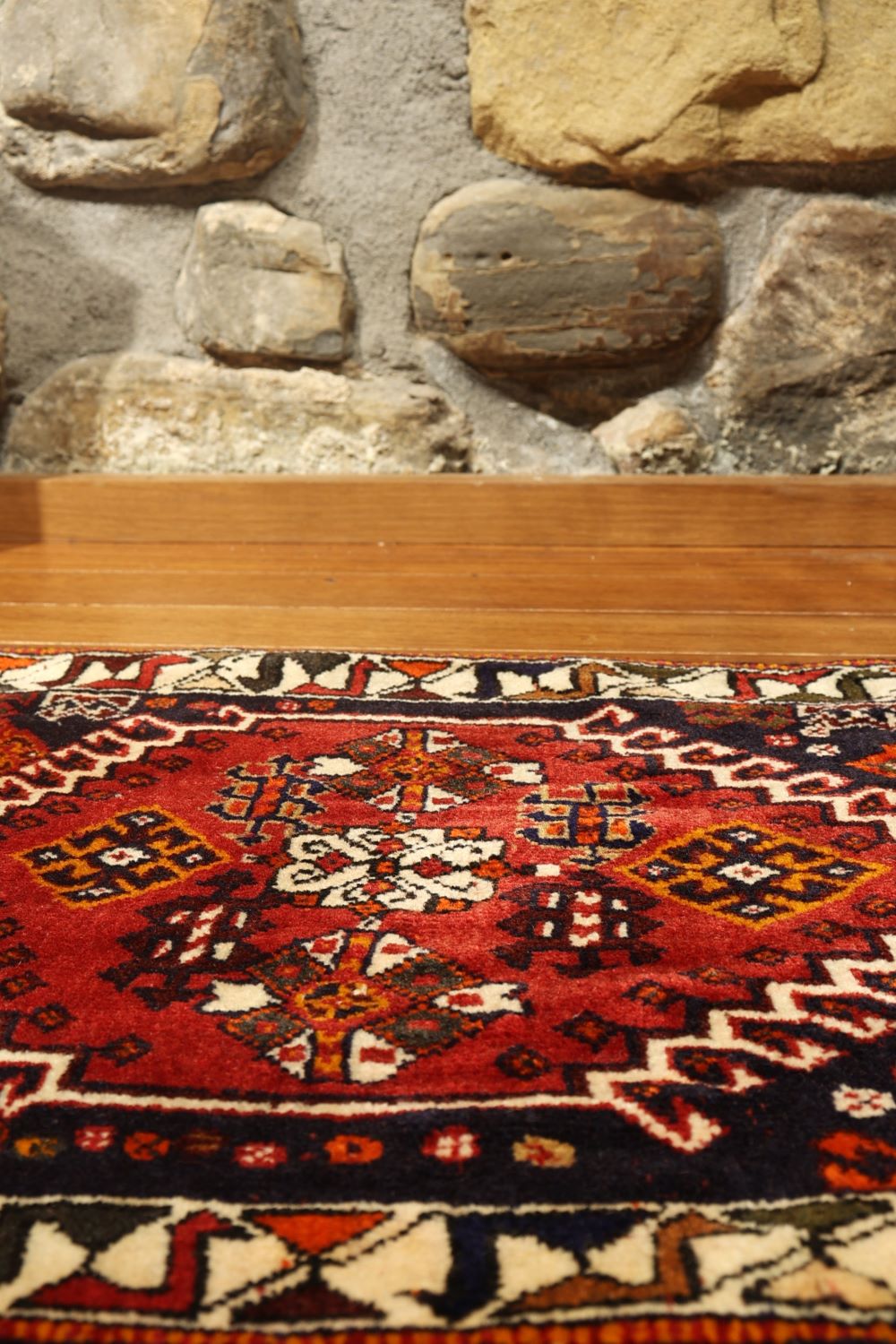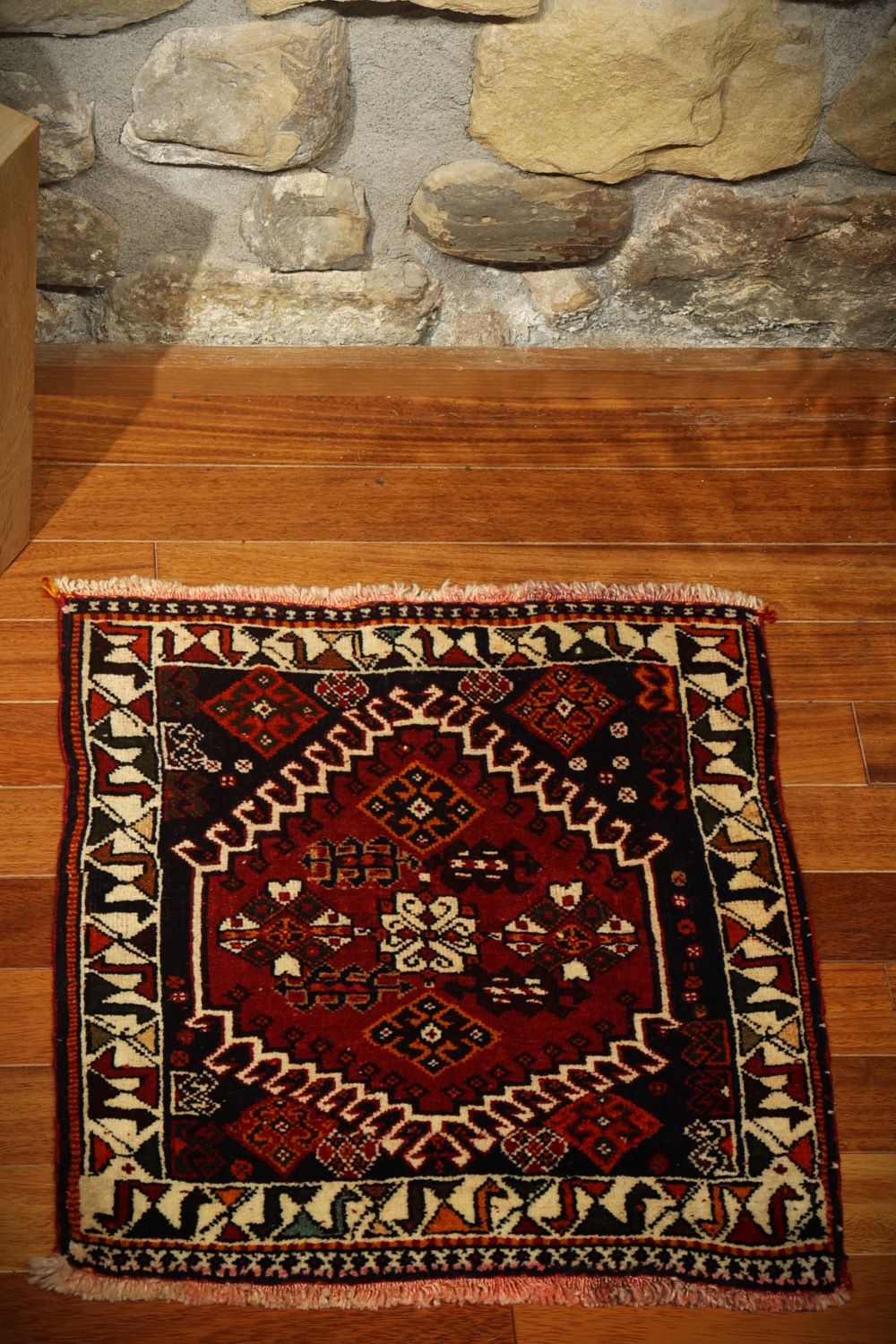Semi-antique rug woven by a woman from the Qashqai tribe. The border is a deep blue colour. This rug is finely woven with a large number of knots. The wool is soft and shiny and is a very good example of a well woven poshti rug.
Material: 100% hand-spun sheep wool
Size: 59×55 cms
Origin: Qashqai tribe from Iran
Date of weaving: 1950-60’s
The term Pushti or Poshti meaning pillow or cushion has its roots in early Persian culture. Pushti or Poshti is a term that refers to small hand-knotted carpets traditionally used as back rests. The covers used to be filled with wool or straw and put on camel saddles for back support. A secondary use was as a cushion. Over time the use as a cushion superseded the original use. These are the small ‘rugs’ that would be taken out and unrolled for a cherished guest to sit on, bringing more luxury and circumstance to the occasion. It is a term used both for urban as well as cottage industry and nomadic examples. The tradition goes back at least to the Safavid period where in certain Persian miniatures the Shah can be seen portrayed sitting on a small square mat, usually on top of another carpet or on a raised dais. A large part of the attraction to the Poshti rugs and part of the reason this may be an unknown genre, is that these rugs were of incredible beauty and craftmanship and therefore, families were reluctant to sell them.
They are similar to the Balisht of the Baluch, the yastiks of Turkey or the Napramach of the Uzbeks.
1 in stock
| Weight | 2 kg |
|---|
